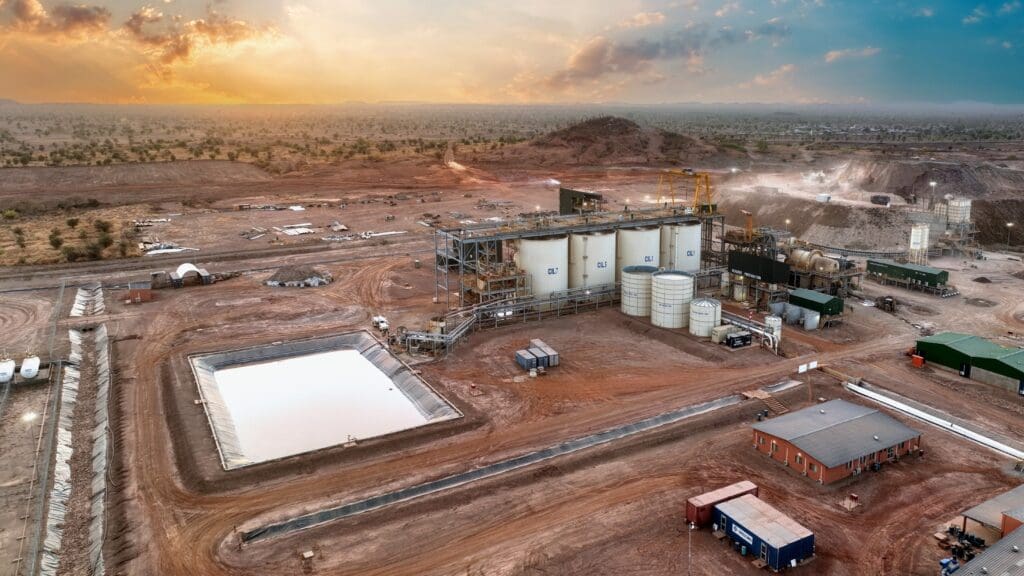
By James Brewer
Toronto Stock Exchange-listed Orezone Gold Corporation is making significant progress in building what promises to be one of West Africa’s largest mines for exploiting the much sought-after precious metal. Its 90%-owned flagship project is in Burkina Faso, one of the nations in the oft-troubled Central Sahel region but it is operating in an area considered benign for its aims. Orezone is meanwhile raising its profile more widely with an application to make its shares available also in Australia.
Known as the Bomboré Gold Mine, it is 85 km east of the capital, Ouagadougou, and started commercial production in December 2022 with a 5.2 million tonne-per-year oxide plant which now operates at 6 million tonne-per-year… Now expansion plans are well underway in what the company assesses as stable and secure operating conditions.
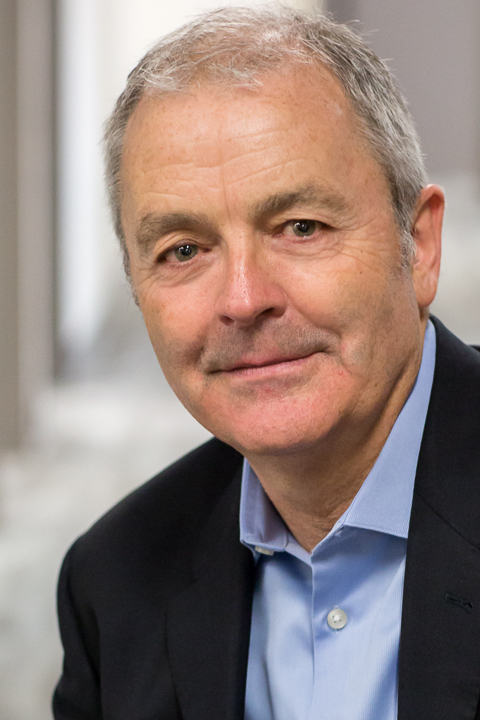
Patrick Downey, the company president and chief executive, has announced first quarter 2025 results and briefed London and international investors on ongoing strategy.
He assured a London gathering that the mine site, a 90-minute drive from Ouagadougou by paved international highway “offering excellent infrastructure and simple logistics,” has been undisturbed by political developments. Burkina Faso along with two neighbouring countries – Mali and Niger – has suffered volatility, but life goes on in the mining sector.
It seems that other mining companies share Mr Downey’s confidence. He welcomes what he says is the “supportive mining jurisdiction” of Burkina Faso which has brought 16 mines in total into production, most of them built on or ahead of schedule and on or under budget. He refers to “strong support from local communities and in-country partners.” Orezone has experienced no supply chain issues, Mr Downey emphasised. He said that he is concentrating on expanding the Bomboré mine, in which the government of Burkina Faso has a 10% carried interest.
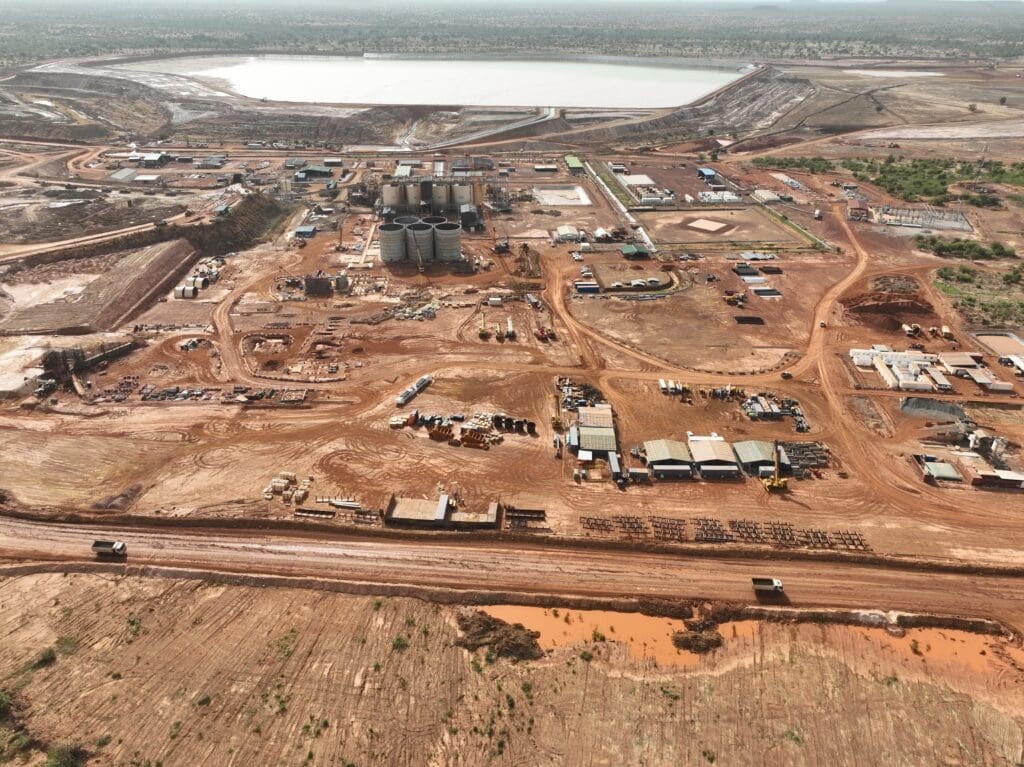
The project is developing at a bonanza time for the price of gold – which safe-haven buying briefly drove to a record $3,500 per ounce in April 2025, before the price eased a little in the face of temporarily cooling global tariff war tensions. The commodity has had a bull run well above the base case gold price of $1,750 per ounce used in Orezone’s 2023 feasibility study.
Bomboré’s oxide facility was constructed on time and under budget (even though that was during the Covid emergency) and has operated above design at a processing rate now of 6 million tonnes per annum. Oxide ores are the product of near-surface in-situ weathering and are softer in nature than the hard rock ore beneath. At Bomboré ore types will be mined via open pit, with the longer-term potential for underground hard rock mining in higher-grade sub-zones at depth.
The Stage 1 independent, parallel 2.5 tonnes per annum hard rock processing plant will increase production of gold to over 170,000 ounces per annum, with the first gold pour and plant commissioning scheduled for the fourth quarter of 2025. The Orezone chief said that construction of Stage 1 of the hard rock expansion made excellent progress in the first quarter of 2025, on budget and with project completion hitting 45%.
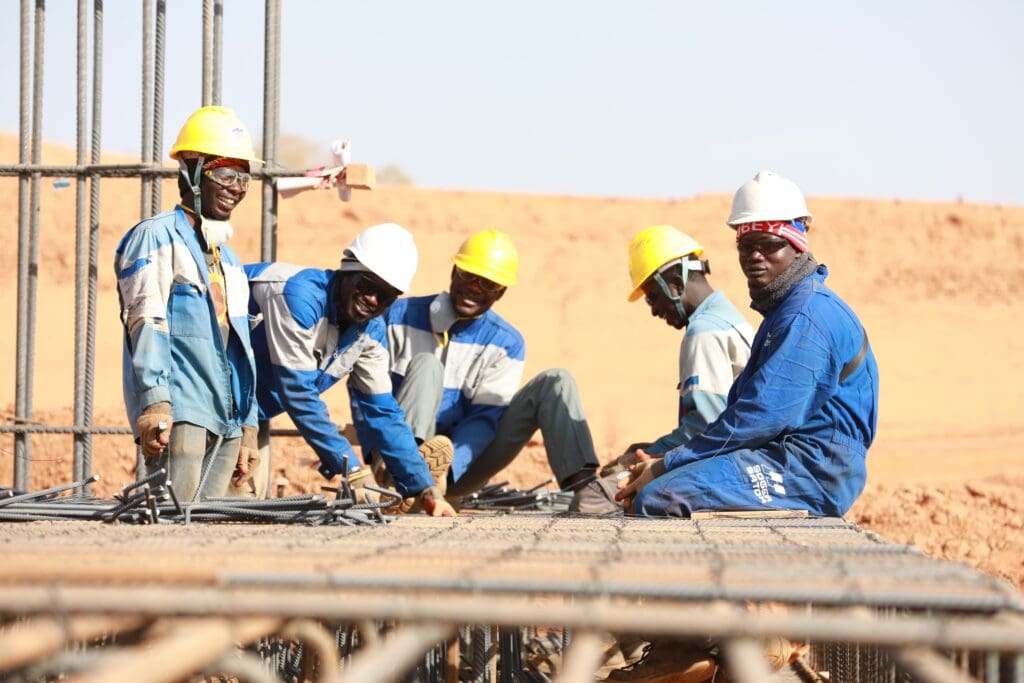
The Stage 2 hard rock plant expansion, evaluated for acceleration with commissioning in late 2026, would increase gold production to 220,000-250,000 ounces a year. Stage 2 hard rock plant capital costs are estimated at $90-95 million.
Announcing first quarter 2025 financial results, Mr Downey said it had been “another consecutive quarter of positive net earnings and free cash flow, driven by our unhedged exposure to rising gold prices. Production and costs were in line with expectations, with annual guidance being maintained. Cash reached a record $102m at March 31, 2025, providing the company with significant financial flexibility in pursuing its strategy of expanding gold production at our Bomboré mine.”
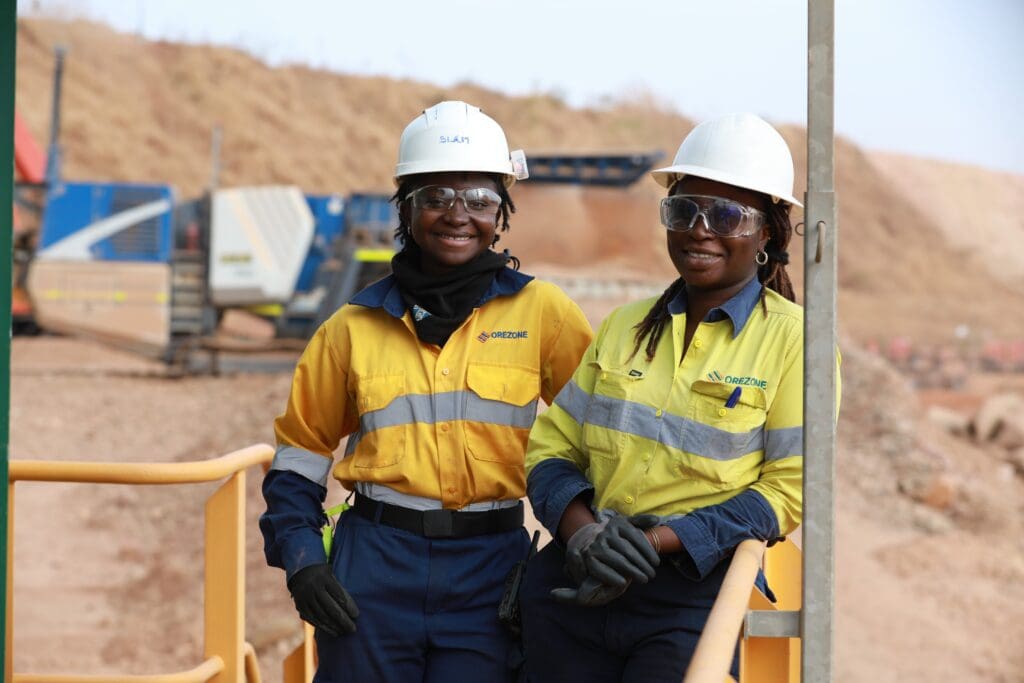
Mr Downey said: “Mined tonnage was ahead of plan for the quarter, which keeps the company well-positioned to achieve its 2025 production guidance of 115,000-130,000 ounces.”
In the first quarter of 2025, Orezone reported EBITDA (earnings before interest, taxes, depreciation, and amortisation) of $41.2m, which was 36% higher than in the year-earlier quarter. The company, which has a C$750 million market capitalisation, aims to be debt-free by the fourth quarter of 2027
Bomboré’s global resource of 5.13 million ounces spans across 14km with the life of mine reserve pits reaching an average depth of only 38 metres, which supports the Stage 2 hard rock expansion production profile of 220,000 to 250,000 ounces. Orezone is currently conducting a large-scale exploration programme designed to test the depth potential of Bomboré’s mineralisation with the goal of increasing the company’s resource base to 7 to 10 million ounces. Initial results from this exploration programme clearly illustrate that the broader system remains open to depth and along strike of the current mineralised trends, underscoring the significant exploration upside still to be realised at Bomboré.
Mr Downey reported that the company was well advanced in its application for a secondary listing on the Australian Securities Exchange (ASX) which it expected to be completed later in mid-2025. This is being done to expand the company’s market profile, shareholder base, research coverage and trading liquidity through access to retail and institutional investors including specialist mining-focused funds. He said that the ASX is a very easy place to do business, has great logistics, and ASX investors have an active focus on investing in West Africa, whereas TSX investors were focused primarily on the Americas.

As at May 1, 2025, 14% of the company’s share registry was held by Australian-based institutional funds, a proportion which is expected to increase after the proposed secondary listing on the ASX is completed by the end of June.
Mr Downey said that recent equity financing was well supported by several key Australian mining funds and by “our cornerstone investor, West African investment group Nioko Resources Corp, through their pro-rata participation.” Those moves added over $34m to the company’s treasury and provided the opportunity to study the merits of fast-tracking Stage 2 of the hard rock expansion. “The company expects to announce a board-approved final investment decision on Stage 2 in the coming months.”
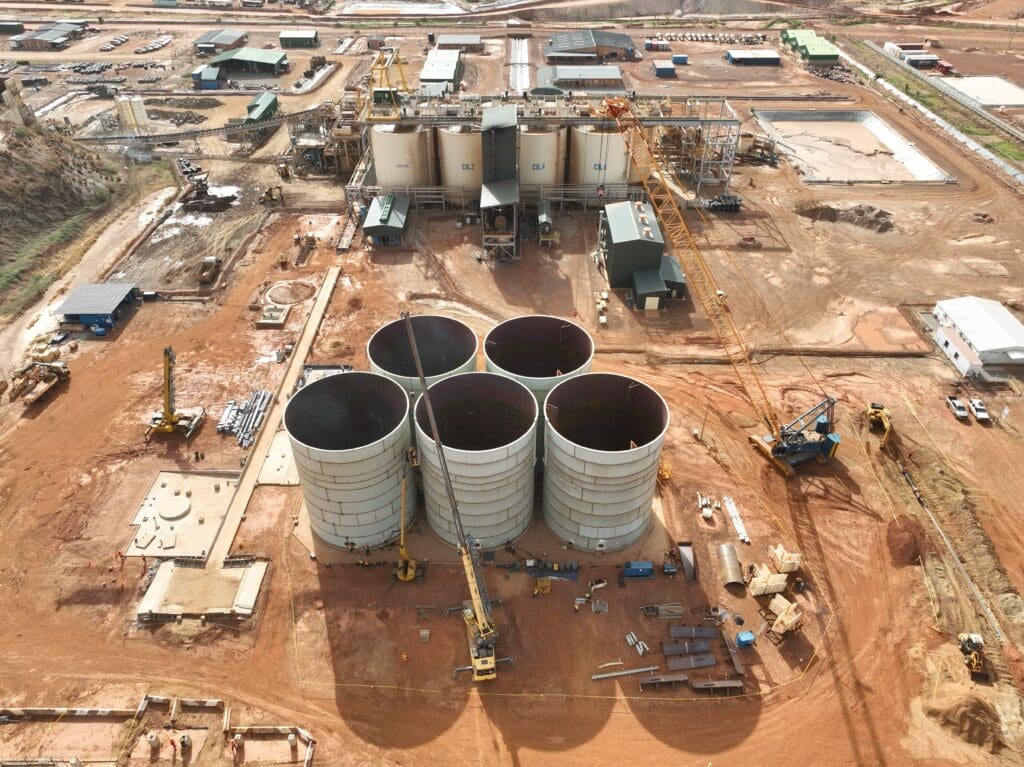
Nioko Resources is Orezone’s largest shareholder with a 19.95% stake “which amounts to great political insurance.” At the same time, Nioko is the largest shareholder in three other, unrelated, mining businesses, in Mali, in Guinea and in Liberia. Coris Bank, based in Burkino Faso and one of the largest banks in West Africa, is Orezone’s senior lender.
Burkina Faso’s substantial gold deposits have garnered it an important place in the global gold market. A former French colony, it was known as Upper Volta and achieved independence in 1960. In August 1984, former president the late Thomas Sankara announced a name change to Burkina Faso, which means land of the upright [honest] men.
Mr Downey says the key to Orezone’s success has been continuing to add value to the country, with its commitment to local content and to a local workforce who are 97% Burkinabe. The company has a programme of relocating households from the mining permit area to new communities, in what it calls its Resettlement Action Plan. A ceremonial handing over of house keys to the local Chief of Natinga village was among symbols of the support of the local communities and the Government of Burkina Faso. Resettlement villages include new facilities such as schools, clinics, markets, mosques, churches and roads, and are part of Orezone’s long term sustainable development programmes throughout the life of the project and beyond., says the company.
Mr Downey, a veteran mining entrepreneur who took over the company in 2017, heads an experienced team “focused on social responsibility and sustainability with a proven track record in project construction and operations, financings, capital markets, and M&A.”
It is clear that 2025 will be a transformational year for Orezone with a growing production profile, an increased market presence in Australia and more drilling to support Bomboré’s future growth as the business establishes itself as a major player in the West African mining landscape.
More information at https://orezone.com





